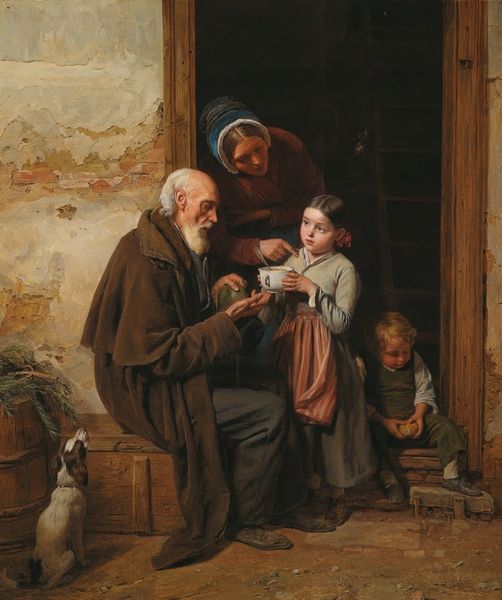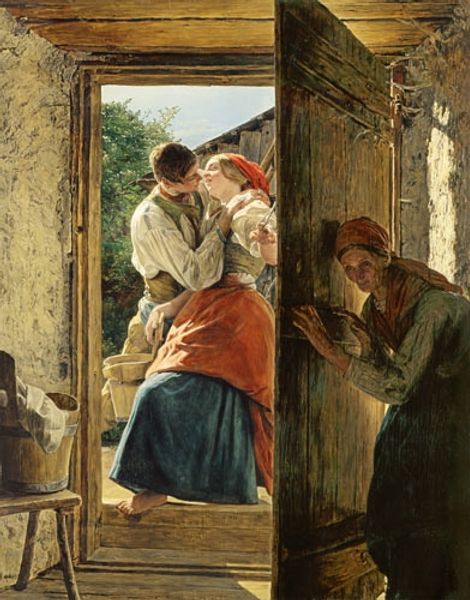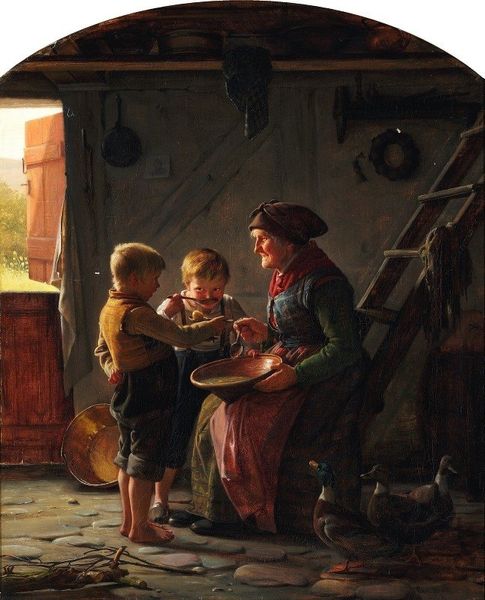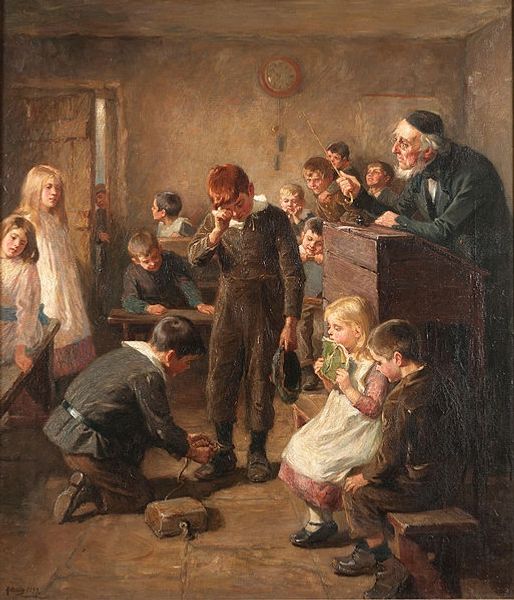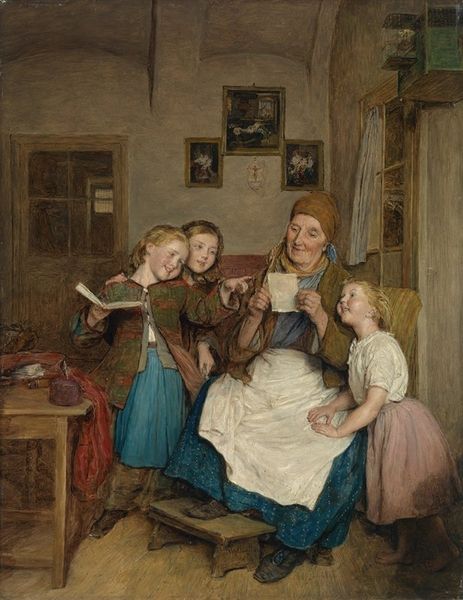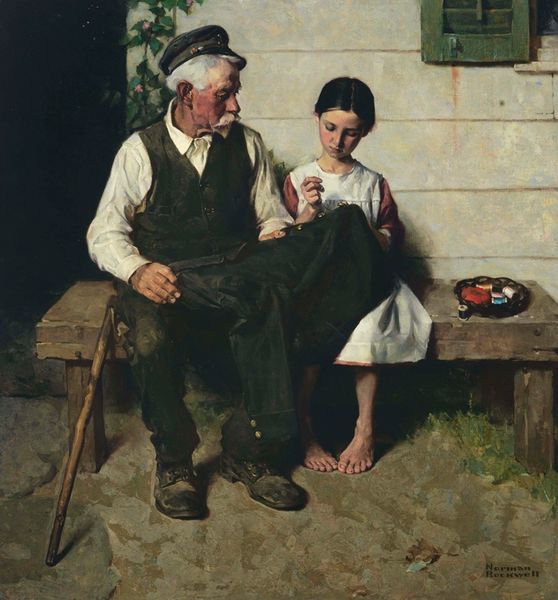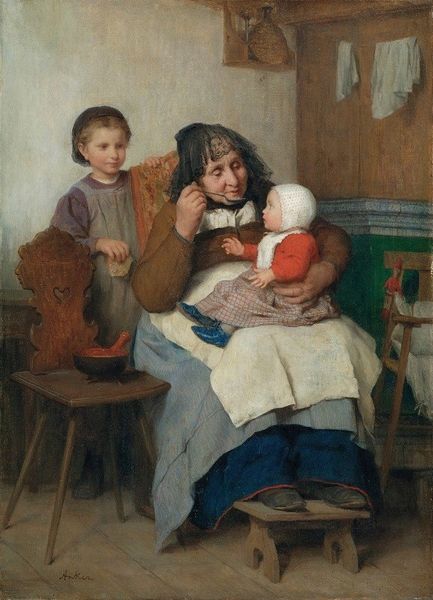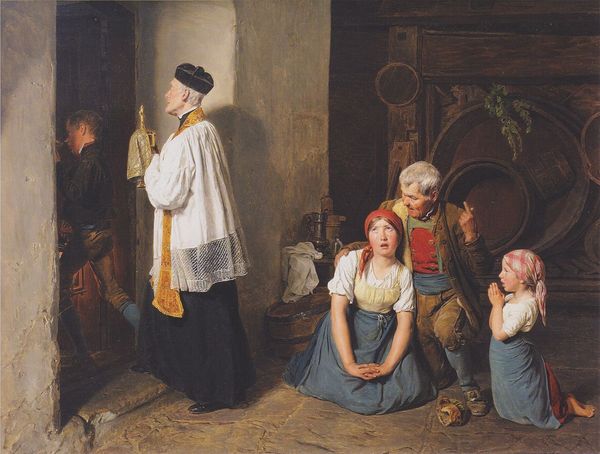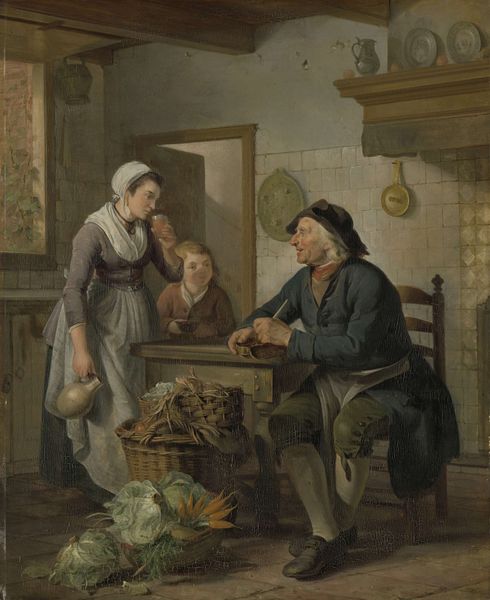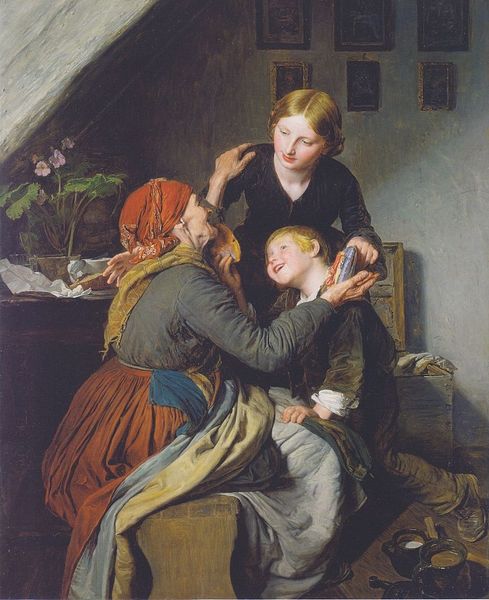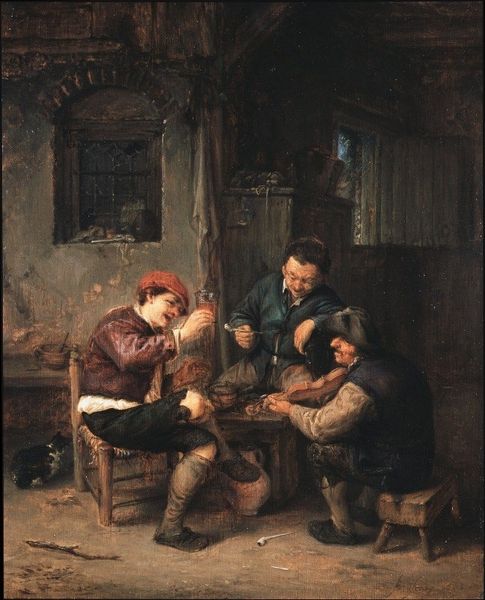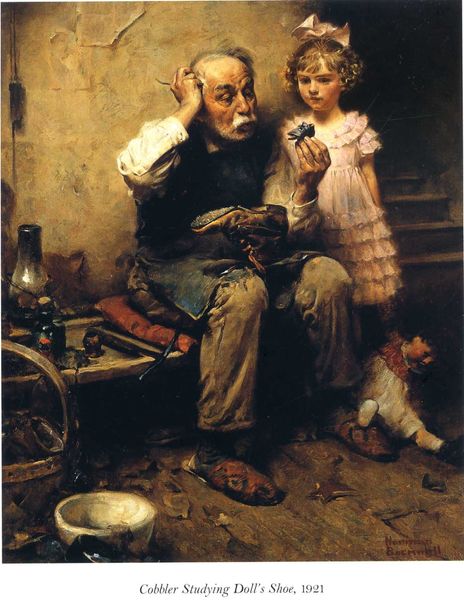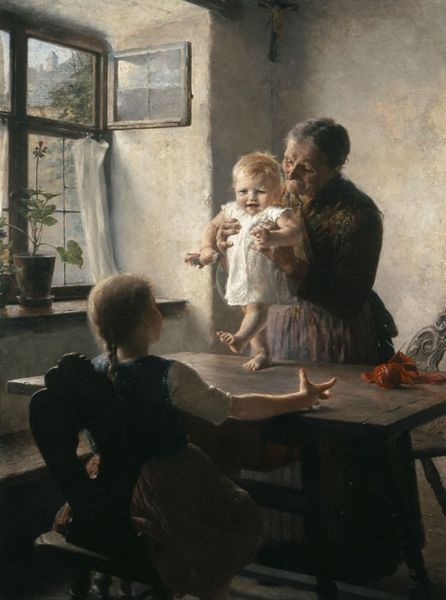
Copyright: Public Domain: Artvee
Editor: This is "Beggar," painted by Ferdinand Georg Waldmüller in 1859, using oil paint. The scene feels very intimate, a group of children assisting an older man. How do you interpret this work? Curator: Notice how the artist uses light. The faces of the children are brightly illuminated as they are assisting an older, perhaps destitute man. This creates a powerful symbol. The act of offering food, represented through a golden plate, suggests compassion and charity but may signify something more. Consider what cultural expectations of generosity meant in 19th-century Europe. What is this "handing over" doing here, literally, but also symbolically? Editor: It almost seems like they are giving him their blessings, not just food. Curator: Exactly. The light reflecting off their faces makes them angelic and ethereal; while that very human interaction is loaded. How might the representation of poverty in art change across centuries and cultures? Do you see similar themes echoed in, say, religious iconography? Think about how certain archetypes, the giver and the receiver, function within the broader framework of social consciousness. Editor: I never considered how generosity itself can become an artistic symbol, taking on a deeper resonance. Curator: Indeed. It is interesting how such depictions shape and reflect societal values. Symbols are so crucial because they can mean different things through time and different contexts. Editor: Thanks; I have a better understanding now about how social themes take visual form and keep speaking across the centuries.
Comments
No comments
Be the first to comment and join the conversation on the ultimate creative platform.
